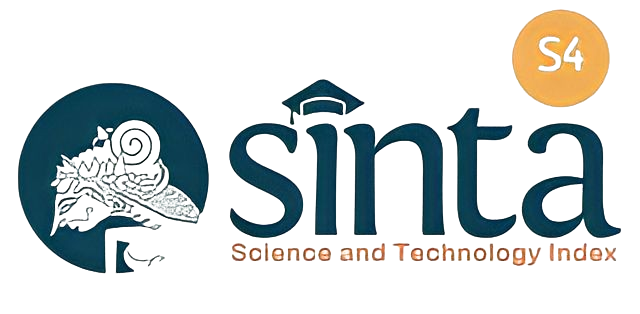Assessment of Plant Growth in Aeroponic Systems Integrated with Smart Farming Compared to Conventional Methods
DOI:
https://doi.org/10.34012/jutikomp.v8i1.7033Keywords:
Aeroponics, Confensional Methods, Smart Farming, IoTAbstract
The increasing demand for sustainable agriculture in Indonesia and challenges like land scarcity and inefficient resource use have driven interest in innovative farming technologies. This study investigates the comparative effectiveness of an innovative farming-based aeroponic system versus a conventional soil-based system in cultivating green chili. A quantitative experimental design was employed, using IoT-integrated sensors in the aeroponic setup to monitor and control environmental parameters, while the conventional system relied on manual practices. Key growth indicators, including plant height, number of leaves, and wet and dry weight, were measured over a 30-day day. Statistical analysis revealed that the aeroponic system significantly outperformed the conventional system across all parameters (p < 0.05), with dry weight showing the most substantial improvement. These findings underscore the potential of smart aeroponics in enhancing crop productivity and resource efficiency. However, cost, energy dependency, and scalability considerations must be addressed to enable broader adoption. The study contributes to the growing body of evidence supporting precision agriculture as a viable strategy for sustainable food production.
References
Akbar, A. (2023). Implementasi Internet of Things Untuk Monitoring Kelembapan Tanah Menggunakan Mikrokontroler. Jurnal Kecerdasan Buatan Dan Teknologi Informasi, 2(2), 91–97.
Atmaja, A. P., Hakim, A. El, Wibowo, A. P. A., & Pratama, L. A. (2021). Communication Systems of Smart Agriculture Based on Wireless Sensor Networks in IoT. Journal of Robotics and Control (JRC), 2(4). https://doi.org/https://doi.org/10.18196/jrc.2495
Dewi, H. S., Putri, M. A., Kurniawan, A., Prakoso, B. Y., Budilaksono, S., Kencana, W. H., & Febrianty. (2022). Smart Farming Teknologi Monitoring Produksi Dan. Jurnal Sistem Komputer Musirawas, 7(1), 9–11.
Dutta, M., Gupta, D., Tharewal, S., Goyal, D., Sandhu, J. K., Kaur, M., Alzubi, A. A., & Alanazi, J. M. (2025). Internet of Things-Based Smart Precision Farming in Soilless Agriculture: Opportunities and Challenges for Global Food Security. IEEE Access, 13(January), 34238–34268. https://doi.org/10.1109/ACCESS.2025.3540317
Fasciolo, B., Ahmed Awouda, G. B., & Lombardi, F. (2023). A smart aeroponic system for sustainable indoor farming. Procedia CIRP, 116, 636–641. https://doi.org/https://doi.org/10.1016/j.procir.2023.02.107
Foster, B., Reyta, F., & Johansyah, M. D. (2021). Hydroponic Training to Improve Community Living Standards in Densely Populated and Weak Economies. Budapest International Research and Critics Institute-Journal (BIRCI-Journal), 4(1). https://doi.org/https://doi.org/10.33258/birci.v4i1.1795 Article Metrics
Manurung, I., Putri, F. V., Afrila, M., Hafizd, M. A. Al, Haditya, R., Gusni, J., & Miswarti, M. (2023). Penerapan Sistem Hidroponik Budidaya Tanaman Tanpa Tanah untuk Pertanian Masa Depan. Jurnal Pengabdian Kepada Masyarakat Nusantara (JPkMN), 4(4), 5140-5145. https://doi.org/https://doi.org/10.55338/jpkmn.v4i4.1892
Oh, S., & Lu, C. (2023). Vertical farming - smart urban agriculture for enhancing resilience and sustainability in food security. The Journal of Horticultural Science and Biotechnology, 98(2). https://doi.org/https://doi.org/10.1080/14620316.2022.2141666
Ramalingannanavar, N., Nemichandrappa, M., Reddy, G. V. S., Dandekar, A. T., Kamble, J. B., & Dhanoji, M. M. (2020). Design, Development and Evaluation of Solar Powered Aeroponic system – A Case Study. International Journal of Current Microbiology and Applied Sciences (IJCMAS), 9(3), 3102–3112. https://doi.org/https://doi.org/10.20546/ijcmas.2020.903.355
Ravindra B. Malabadi, Kiran P. Kolkar, Raju K. Chalannavar, Karen Viviana Castaño Coronado, Simuzar S. Mammadova, Himansu Baijnath, Antonia Neidilê Ribeiro Munhoz, & Gholamreza Abdi. (2024). Greenhouse farming: Hydroponic vertical farming- Internet of Things (IOT) Technologies: An updated review. World Journal of Advanced Research and Reviews, 23(2), 2634–2686. https://doi.org/10.30574/wjarr.2024.23.2.2595
Riyadi, M. (2023). Sistem Cerdas Untuk Monitoring Pengukuran Suhu Dan Kelembapan Tanah Pada Tanaman Cabai Berbasis Internet Of Things (IOT) Menggunakan Aplikasi Telegram. Jurnal Teknologi Elektro, 14(2), 105. https://doi.org/10.22441/jte.2023.v14i2.008
Sholehah, E. V., Rusdi, M., & Rosadi, M. E. (2023). Aplikasi Web Berbasis Mikrokontroler Untuk Pengawasan Kualitas Tanah Di Ladang Jagung. Jurnal Teknik Informatika Dan Sistem Informasi, 10(3), 486–497.
Shrouf, A. (2017). Hydroponics, Aeroponic and Aquaponic as Compared with Conventional Farming. American Scientific Research Journal for Engineering, Technology, and Sciences (ASRJETS), 27(1), 247–255.
Wahyudi, D., Ubaidilah, M., Ratnawati, D., Sholihah, W., & Tresnawati, T. (2021). Development of mobile-based apps towards smart farming technology in Agro Innovation Park (Tagrinov) Management. IOP Conference Series: Earth and Environmental Science, 756(1). https://doi.org/10.1088/1755-1315/756/1/012059
Yadrami, S. G., & Gurav, D. . R. S. (2023). Comparison of Conventional Method of Farming with Hydroponics and Aeroponics. Nternational Journal of Innovative Research in Science, Engineering and Technology (IJIRSET), 12(11). https://doi.org/10.15680/IJIRSET.2023.1211086
Zoran Broćić, Mirko Milinković, I. M., Jasmina Oljača, B. V., Milošević, D., & Poštić, D. (2019). Comparison of Aeroponics and Conventional Production Systemof Virus-free Potato Mini Tubers in Serbia. Agro-Knowledge Journal, 20(2), 95–105. https://doi.org/10.7251/AGREN1902095B
Downloads
Published
How to Cite
Issue
Section
License
Copyright (c) 2025 Muhammad Ihsan, Zulhipni Reno Saputra Elsi

This work is licensed under a Creative Commons Attribution-ShareAlike 4.0 International License.
- Hak Cipta atas naskah-naskah karya ilmiah di dalam Jurnal ini dipegang oleh Penulis.
- Penulis menyerahkan hak saat pertama kali mempublikasi Naskah karya ilmiahnya dan secara bersamaan Penulis memberikan izin/lisensi dengan mengacu pada Creative Commons Attribution-ShareAlike 4.0 International License kepada pihak lain untuk menyebarkan karya ilmiahnya tersebut dengan tetap mencantumkan penghargaan bagi penulis dan Jurnal Teknologi dan Ilmu Komputer Prima sebagai media Publikasi pertama atas karya tersebut.
- Hal-hal yang berkaitan dengan non-eksklusivitas pendistribusian Jurnal yang menerbitkan karya ilmiah penulis dapat diperjanjikan secara terpisah (contoh: permintaan untuk menempatkan karya yang dimaksud pada perpustakaan suatu institusi atau menerbitkannya sebagai buku) dengan Penulis sebagai salah satu pihak perjanjian dan dengan penghargaan pada Jurnal Teknologi dan Ilmu Komputer Prima sebagai media publikasi pertama atas karya dimaksud.
- Penulis dapat dan diharapkan untuk mengumumkan karyanya secara online (misalnya pada Repositori atau pada laman Organisai/Institusinya) sejak sebelum dan selama proses pengumpulan naskah, sebab upaya tersebut dapat meningkatkan pertukaran citasi lebih awal dan dengan cakupan yang lebih luas.







